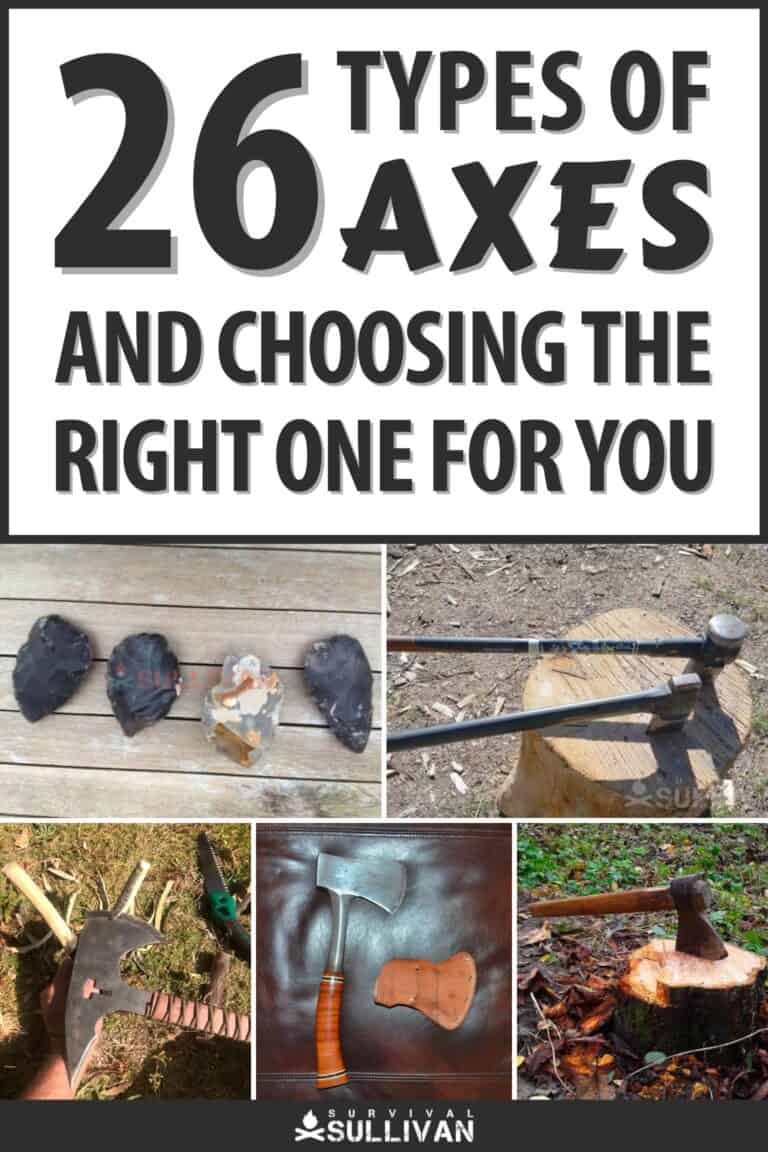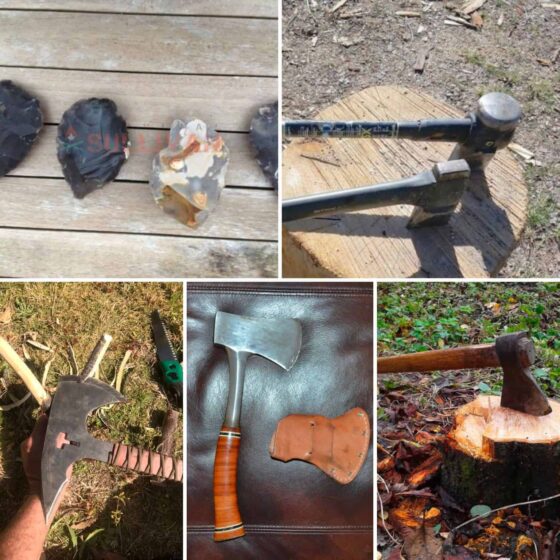
Among the single best tools out there, and also one that has actually been with humanity for the longest, is the modest axe.
Axes have actually been used for all kinds of purposes, normally chopping wood or in brutal close-quarters battle, given that prior to recorded history, and there is no indication that we will be giving them up at any time soon.
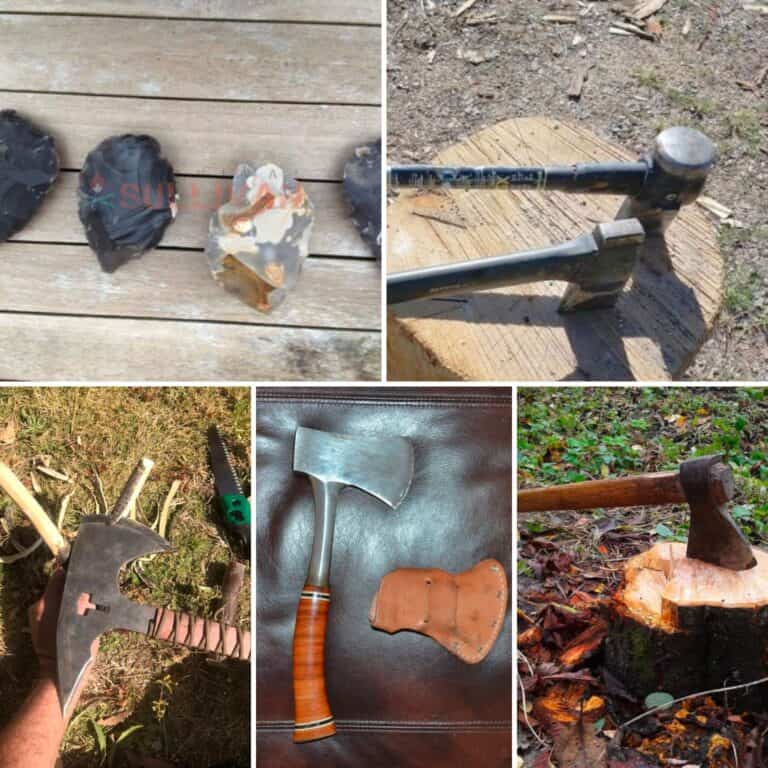
However, thinking about axes are so common, there are a fantastic many styles in circulation today, a lot of them hailing from different cultures all over the world. All of them are enhanced for several purposes, and selecting the best axe is going to make your work, whatever it is, a lot simpler.
Keep checking out to find out more about 24 different styles of axe, and to figure out which one is best for you.
| Axe Type | Forestry and Energy | Camping and Survival | Weapon |
|---|---|---|---|
| Dropping Axe | X | ||
| Forest Axe | X | ||
| Double Bit Axe | X | ||
| Splitting Maul | X | ||
| Hewing Axe | X | ||
| Dividing Axe | X | ||
| Broad Axe | X | ||
| Bearded Axe, aka Viking Axe | X | ||
| Hudson Bay Axe | X | ||
| Adze | X | ||
| Mattock | X | ||
| Pickaxe | X | ||
| Fire Axe | X | ||
| Shepherd’s Axe | X | ||
| Shingling Hatchet | X | ||
| Mortising Axe | X | ||
| Carpenter’s Axe | X | ||
| Hatchet | X | ||
| Hand Axe | X | ||
| Camping Axe | X | ||
| Crash Axe | X | ||
| Ice Axe | X | ||
| Battle Axe | X | ||
| Bardiche | X | ||
| Tomahawk | X | ||
| Tossing Axe | X |
Forestry and Energy Axes
All of these axes are created to do work with wood, from slicing down trees and splitting fire wood to making specific cuts in lumber to allow the building of furnishings and structures.
1. Felling Axe
The classic long axe you see lumberjacks transporting into the woods. These are two-handed axes designed to cut through the fibers of the wood.
The heads are of moderate breadth, however usually quite narrow and sharp to enable them to bite deeply into the trunk of a tree.
Correctly developed, kept sharp and used with the right method, it is possible to lower even a large tree with unexpected quickness.
But be prepared, because utilizing one of these is quite a workout!
2. Forest Axe
A forest axe is essentially a modification of a felling axe, one that is a little bit smaller general with a much shorter haft, or manage, meant to make it more maneuverable and easier to bring.
For general-purpose use, they are usually a terrific choice for dealing with anything however the largest, mature trees.
3. Double-Bit Axe
A double-bit axe is an axe that has a second blade, or bit, opposite the first. Although it might seem unneeded, this is really a labor-saving invention.
Using a double-bit axe permits the wielder to just reverse the axe in hand when one edge starts to wear, implying that more work can be done rapidly in between sharpenings.
At the same time, some individuals select to keep one edge razor sharp and utilize it only for optimum tasks, but they keep the other edge rather duller when the axe need to be used on a questionable or risky task.
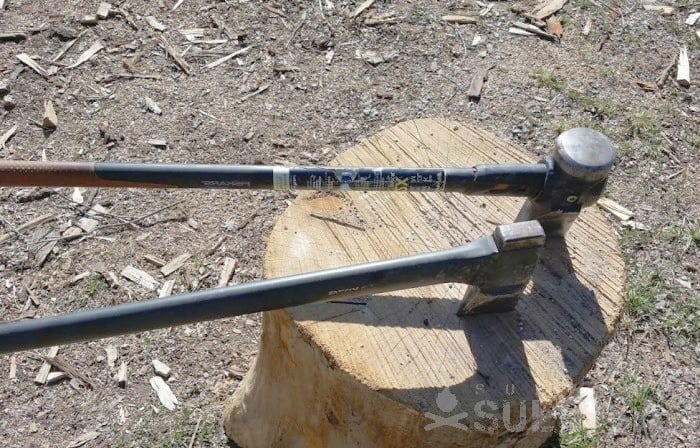
4. Dividing Maul A splitting whip is a sharpened wedge that’s generally much heavier than a common axe
of equivalent length. It is created, if the name wasn’t clue enough, to split wood lengthwise, along the grain of the fibers. It can divide even large, stout firewood with a single strike where it may take 2, three or more strikes with a comparable real axe.
Utilized for any other purpose, they are clumsy and strenuous. Simply keep these on hand for fire wood duty and you can thank me later.
5. Hewing Axe
A hewing axe is a special axe created to process raw logs into usable, square lumber.
Although largely supplanted by modern-day sawmills, it’s still important when working in an austere environment or if you simply want to do something the old fashioned way for minimal cost at the expenditure of labor and time.
Available in a variety of designs and head shapes, a hewing axe may be simply the ticket if you are attempting to develop a cabin, furniture or any other project out of wood.
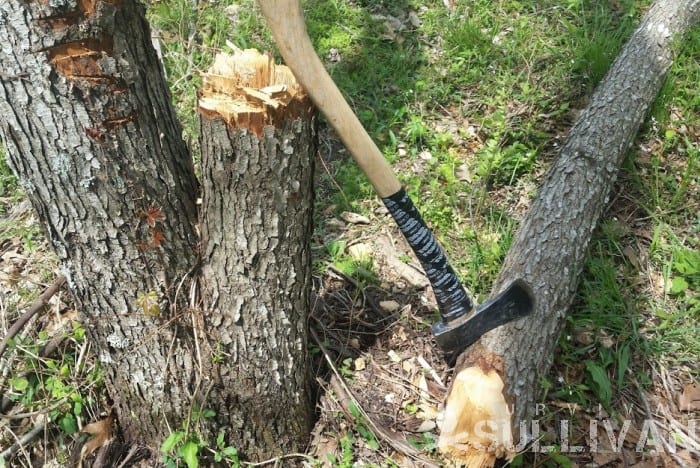 axe beside fallen tree 6. Dividing Axe A splitting axe is somewhere between a felling axe and a trample. It’s not as narrow as a splitting axe, and no place near as broad as a trample. This offers it far better slicing efficiency when you’re attempting to split wood lengthwise along the grain, however it keeps some efficacy when you’re attempting to cut through it horizontally. Not a bad option if you’re dealing with softwoods …
axe beside fallen tree 6. Dividing Axe A splitting axe is somewhere between a felling axe and a trample. It’s not as narrow as a splitting axe, and no place near as broad as a trample. This offers it far better slicing efficiency when you’re attempting to split wood lengthwise along the grain, however it keeps some efficacy when you’re attempting to cut through it horizontally. Not a bad option if you’re dealing with softwoods …
7. Broad Axe
Although this informally describes any axe with a tall blade or a deep beard, it really refers to a particular type of axe utilized for processing lumber, particularly for the squaring off or finishing of lumber comparable to a hewing axe.
Numerous axes of this type are provided single bevel edges, implying they are sharpened only on the one side in the exact same method as a sculpt. This offers much better control for close, exact work on a given workpiece.
8. Bearded Axe, aka Viking Axe
A bearded axe, often described as a Viking axe, looks extremely similar to most others with one secret distinction.
The heel end of the bit extends quite a bit farther than regular, providing these axes a distinct visual look and a much longer cutting surface.
Although there are sometimes associated with the Vikings as a specific battle weapon, it’s most likely that these were multi-purpose axes useful in developing ships, and also for cleaving skulls.
Today, absolutely not the most optimum choice for raw efficiency, but they are stylish and cool historical artifacts.
9. Hudson Bay Axe
A Hudson Bay axe is one that raises a great deal of debate since you hear a lot of arguments concerning what is, and more significantly what is not, a Hudson Bay axe.
In short, this is a compact axe that has a lot in common with a standard felling axe, right to the shape of the manage and the head, although your normal Hudson Bay axe has a pronounced oval eye in the head that secures it to the deal with, and also a straight drop causing the heel of the blade. A versatile, convenient, and capable axe helpful for a variety of functions.
10. Adze
Another ancient tool that is in some cases it said to be unique from an axe, however almost speaking it is much better categorized as a subtype.
The only major distinction between an axe and an adze is that the blade or little the advertisements is horizontal, that is perpendicular with the deal with, rather than vertical or parallel with it.
They’re typically used for the shaping, sculpting and smoothing of wood rather than the durable work of cutting and chopping similar to an axe. They may likewise be utilized as a hoe.
11. Mattock
The mattock is really comparable to the advertisements gone over above, and it also shares some functions with the double-bit axe also talked about elsewhere.
Essentially, the mattock has 2 bits, one horizontal like an adze and one vertical like an axe.
This provides users the very best of both worlds, and the ability of an axe and an adze in a single tool at the expenditure of greater weight.
However, mattocks are usually utilized as a gardening or premises keeping tool where there are utilized to cut through tough soil, roots and other blockages.
12. Pickaxe
A pickaxe is another flexible tool into a multipurpose product for long journeys into and around mountains was quite clever.
13. Shingling Hatchet
A shingling hatchet is among the more modern kinds of axes, being a bit more than a portable axe that includes an integrated nail puller and a, normally waffle-faced, framing hammer head on the survey.
As you may have gotten out of the name, this kind of axe is used in roof, providing the worker all of the tools they require to both remove and fit brand-new shingles with a minimum of downtime.
You can discover these in the tool aisle of virtually every hardware store and huge box home enhancement store in the land.
14. Mortising Axe
Another extremely specialized axe that is created for processing lumber the mortising axe is created to develop mortises for joinery.
They can be used to shape both the tenon and the mortise itself, and are designed to permeate straight into the wood under tight control, and likewise permit the fibers of the wood to be levered and snapped out easily to prepare for the next cut.
15. Carpenter’s Axe
A carpenter’s axe is a close relative of the hatchet, although they tend to be a little larger general.
With a pronounced, deep beard and a notched deal with near the eye of the axe head, they are meant to enable a carpenter to choke method up on the handle for maximum control.
This makes them best for general woodworking, rough shaping logs or other lumber, joinery, and more. Invariably, a carpenter’s axe has a flat poll that permits it to be utilized as a hammer.
Camping and Survival Axes
Axes and related tools are created to be simple to carry on adventures, or for getting people out of a jam in specific environments or circumstances.
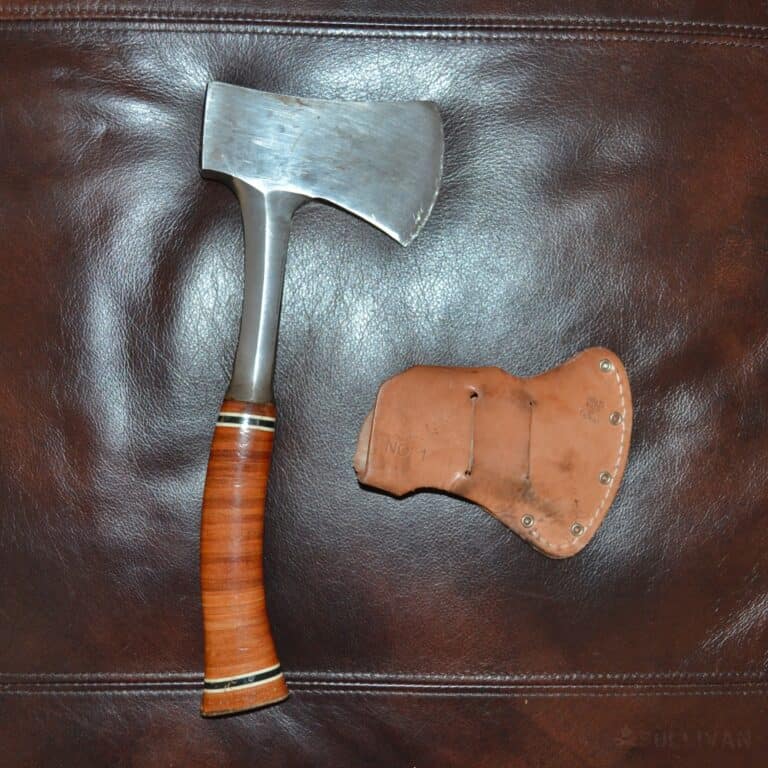 < img width="768
< img width="768
“height=”768″src
= “https://www.survivalsullivan.com/wp-content/uploads/2022/11/a-small-hatchet-768×768.jpg”alt=”a little hatchet”/ > a small hatchet 16. Hatchet A hatchet, at its simplest, is a little more than a compact axe created to be used with just one hand. But, it can in fact be a fair bit more complex than that.
Without getting too far into the weeds, the major distinction between a hatchet and a hand axe is that a hatchet will constantly have a distinct and extending hammer survey by style, whereas a hand axe will have it merely a flat survey, or butt.
Also worth noting is that a hatchet may have a straight or curved deal with.
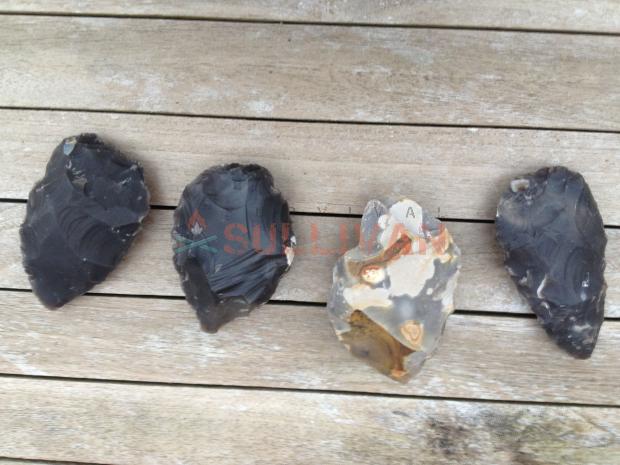
17. Hand Axe As described above, a hand axe is a smaller version of an axe, but one that is an unique style compared to a hatchet. A hand axe has a single cutting edge like a hatchet, but it does not have the protruding hammer pole of the hatchet, having rather a normal flat poll.
Although typically utilized for hammering, this isn’t the designated purpose. Also, hand axes usually have a somewhat curved manage.
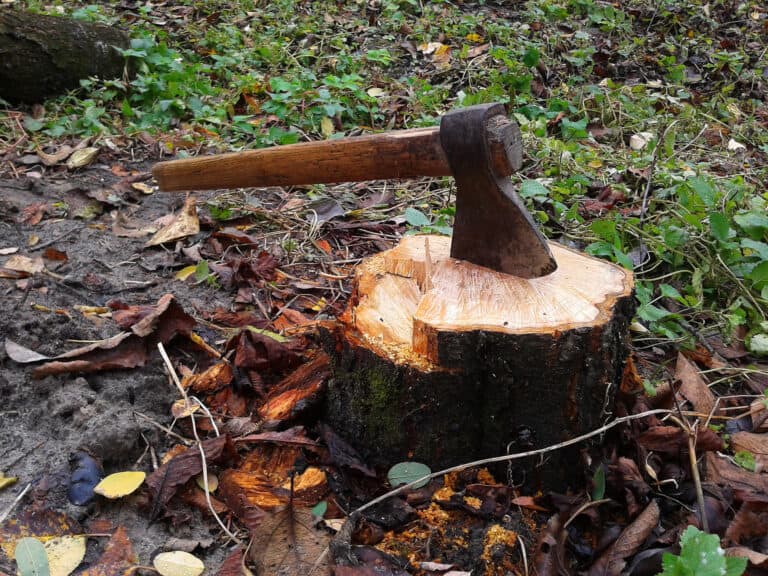
18. Camping Axe An outdoor camping axe is another “in-between”style: much larger and longer than a hatchet or hand axe, however significantly shorter than a full-sized felling axe, and typically longer than a Hudson Bay axe.
Normally, they are treated as a benefit alternative for camping and other outdoor expeditions that provide significantly more performance when slicing as compared to its smaller brethren, while at the very same time staying much lighter and simpler to carry compared to a full-size axe.
19. Crash Axe
Crash axes are specialized tools typically included as part of the emergency package on airplane and in some cases other lorries.
They are created to break through reinforced glass or even remove metal bodywork, and even allow users to pry heavily with them if they require to.
They can be used to enable surviving team members of a crash or breakdown to save their fellow crew members, or simply get themselves out of what would otherwise be a fatal circumstance.
They are in some cases viewed as part of a typical highway emergency situation set in autos.
20. Ice Axe
Another super-specialized axe, this looks more like a mattock than a traditional axe. Having a serrated badger one side and a brief, carefully curved horizontal blade on the other, they’re developed to permit hikers and climbers to safely work out and form unsafe, ice-covered terrain and other surface areas.
They’re likewise utilized to move across them under better control and safety by employing the axe as a handhold after being driven into the ice.
Axes as Weapons
Comprehending the destructive power of a steel wedge slamming into a body requires little imagination. Axes have actually been used as weapons throughout history, and stay in usage today.
21. Fight Axe
Fight axe is a generic term for any axe purpose developed as a weapon. There have actually been numerous, many styles over the ages from all kinds of various cultures all over the world.
Battle axes have an advantage over swords in that they provide substantially more effect over a smaller surface area, and can inflict injuries even through armor.
That being said, they are much slower to utilize compared to a sword, and fighters who devote to a swing and miss out on would often be left large open. Typically highly specialized, most make bad tools, even for wood.
Believe it or not, they’re still utilized today as expert battleground tools and backup weapons! It ends up axes will truly never ever go away!
22. Bardiche
A bardiche is a special kind of fight axe, and is more effectively described as a polearm. This axe consists of an extremely long but shallow axe head averaging 2 feet long, and is sharpened to a razor edge across its entire length.
The length of the blade combined with a very long haft would permit a fighter to strike from a safe distance with devastating, cleaving blows.
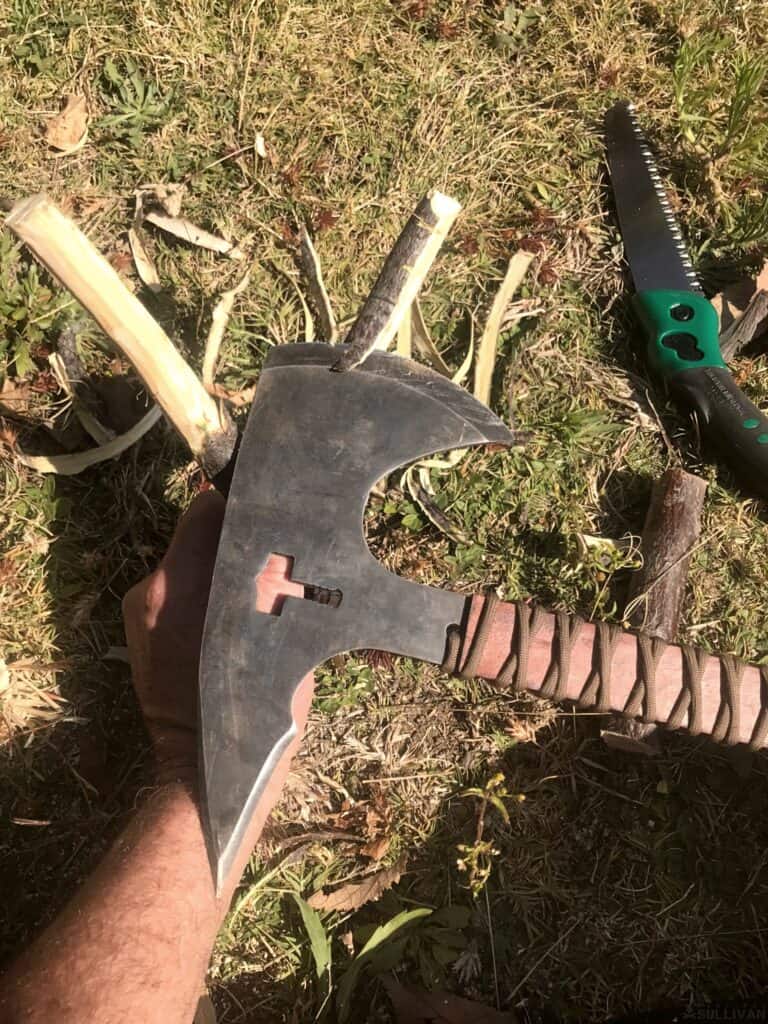 tidying up Y-shaped branch with tomahawk 23. Tomahawk The tomahawk was initially an American Indian weapon including a basic, brief and narrow axe head fitted to a straight handle.
tidying up Y-shaped branch with tomahawk 23. Tomahawk The tomahawk was initially an American Indian weapon including a basic, brief and narrow axe head fitted to a straight handle.
Quick, maneuverable and still devastating in close fight, the tomahawk is renowned for its adaptability: it might be utilized in hand as a weapon or tool, tossed, and even played a part in various custom-mades and ceremonies.
The tomahawk is noticeably American, and lives on today both as a compact tool similar to a hatchet and also a formidable weapon.
Most significantly, a real tomahawk has a head that is slip fit through the eye on the deal with, not pinned or wedged in location as with a traditional axe head.
24. Tossing Axe
A throwing axe is precisely what it says: an axe that is developed and balanced for tossing.
Usually about the size of a hatchet or tomahawk, tossing axes have been used as varied weapons throughout history, and likewise created simply for fun and recreation.
